This is a 101 course…I’m just starting to learn and incorporate more advanced techniques myself. The information is targeted primarily to folks fishing the open party boats, although you can still get some good info here as a private boater or kayak angler.
I hadn’t been on a calico bass targeted trip since last summer down at Dana Wharf. This Sunday, the afternoon ride on the Daily Double was targeting the calicos. It took me awhile to get back into the swing of things, so I thought it might be a helpful refresher for everyone since the bite has been great all up and down our SoCal coast. Please feel free to comment and give some advanced tips to your fellow readers.
About the fish
Calico bass are one of THE most prized gamefish here in SoCal (#6 on the Top 10). It’s also a great fish because it’s highly accessible to all anglers, even if you can only get on a half day boat. Also known as a kelp bass, they are found primarily in the kelp beds with the bigger ones setting up deep inside the underwater garden, waiting to ambush bait fish. As such, catching them poses certain obstacles to success.
Gear and methodology
Let’s start with the gear. You want a light, faster action rod, but it needs to have some backbone to it. The reason being is that you are fishing in the kelp and you want to be able to feel the bite and react quickly when it happens (fast action), but you’re going to need some muscle to turn that fish and deal with the kelp (thus the backbone). Also, whatever your comfortable length of rod, go another 6-12 inches longer. It will help you cast that bait out a little further than your fellow passengers and that extra distance will go a long way toward ensuring your success. I use a 7’6″ G Loomis rod (15-40 line rating) or an 8 ft Seeker 196.
Reel-wise you don’t need a ton of line, so focus on a reel that you can cast easily, and that is light and comfortable. You’ll be casting a lot, so you don’t want a big heavy reel. 200 yards of line is more than ample. I use an older Trinidad 12, or a 220 size Newell. Other popular reels are low profile baitcasters, but you want the saltwater versions so you can get the heavier line on there. I prefer to go “kelp cutter” meaning I use braided line with a short topshot for that last couple feet between the braid and the hook. I have 30# Power Pro on my Trinidad, with 25# fluoro topshot. You can use mono, but I prefer the fluoro because of the abrasion resistance. Calicos have sharp teeth AND you will bump on the kelp and other anglers’ line all day. You aren’t using that much either, so a small spool goes a long way. For hooks, match the size to your bait (smaller for chove, bigger for dines), but in general a 2/0 or 3/0 live bait hook is a good choice. Avoid using shiny ones. They attract mackerel which are often a nuisance when you are calico fishing.
You’ll notice I said bait…it’s a 101 course. The primary method you will use is flylining (just a line and the hook, no weight) a live bait…usually an anchovy or sardine.
Bait selection
In the rush to get a line in the water, I see a lot of rent rodders pick any old bait and have it dangling on their hook before the captain even says fish. If you fall into this trap, you will likely go home with an empty sack. Bait selection is vitally important. You want the hardest bait to catch in the bait well. They will get out away from the boat better, and they are the most enticing to the fish. Best method is to herd them into a corner and scoop your bait from underneath. Try not to handle him too much. If you cover their eyes, they’ll be less squirmy. Avoid ones with red noses. These are the baits that have been banging their head against the wall and they aren’t long of this world. I go under the mouth and up through the nose to hook a chove, side to side thru the nose for sardines. When you cast out that bait, leave your reel in free spool and let him swim. If he swims toward the boat or off to the side, hit restart. Reel it in, get a new bait and recast. Maintain contact with your bait, keeping your line semi-taut. If you can’t feel him, take some line back in. Sometimes, when you take back some line, he’ll feel the pull and get a second wind. This is good. Let him swim. On Sunday, if I could get a good swimmer on my line, I got bit almost 100% of the time.
The Bite
This is when the fun begins. Since you are in free spool, what you’ll notice is that the line is now taking out much faster than your little bait was doing before. Often times, you will feel the death shudder of your bait as he gets real active, just as he’s about to get bit. This signal alerts you that the bite may be about to happen. When that line takes out, give it a 3-5 count, put the reel in gear and swing. Now you have hopefully sunk your hook into a nice calico and the goal is to get him out of the kelp and into the boat as quickly as possible. He took that bait close to the surface. The fish’s first instinct is to head for deep cover in the kelp. If you aren’t properly prepared, you’re probably going to lose that fish. Here’s where having the sturdy rod, heavy line and braid come in real handy. Turn that fish and horse him in. You do not need to worry about playing him and tiring him out. Just get it in the boat.
The fish you see here proved quite a challenge to get to the rail. Not so much because of him, but because of my fellow passengers and the kelp. One of the things about summer calico fishing is that everyone wants to crowd the stern. I know I said in a previous post that the stern isn’t always the best spot. For this kind of fishing though, it usually is. So be prepared to deal accordingly. It can be like fighting your way to the stage in the GA section of a rock concert. It helps to have a buddy with you, so one person can stay at the rail, while the other gets a new bait.
Once I hooked this fish he went left and I was immediately crossed by 3 or 4 lines. I had to detangle my line from the guy next to me, fight around his grandma who was posted up on the rail like Charles Barkley in the paint, get under and around 2 more anglers to finally have a clear path to get him to the boat, and then drag a tangle of kelp in front of him. If I wasn’t properly geared, my line would’ve probably gotten sawed off or snapped by the weight of the kelp, and he’d still be swimming. You freshwater guys can relate. I talked to Tyler Brinks during ICAST about fishing bass down in Florida and he said that the hydrilla grass is where the largemouth like to hide. He fishes a very similar rig to the one I’ve described, because it helps him effectively deal with that grass between him and the bass.
Advanced Techniques
This is already a lengthy post so I don’t have room to cover swimbaits or irons. However, advanced calico anglers use them to great success. I watched Joey Oyama from Squidco and my buddy John Anjard use swimbaits and irons respectively to bring in the biggest fish of the day on Sunday. At some point, I’ll get one or both of them on here to talk about using those methods to catch big calicos.
The calicos are biting great right now, so get out, use this information, and enjoy getting your bass on. Tight lines!


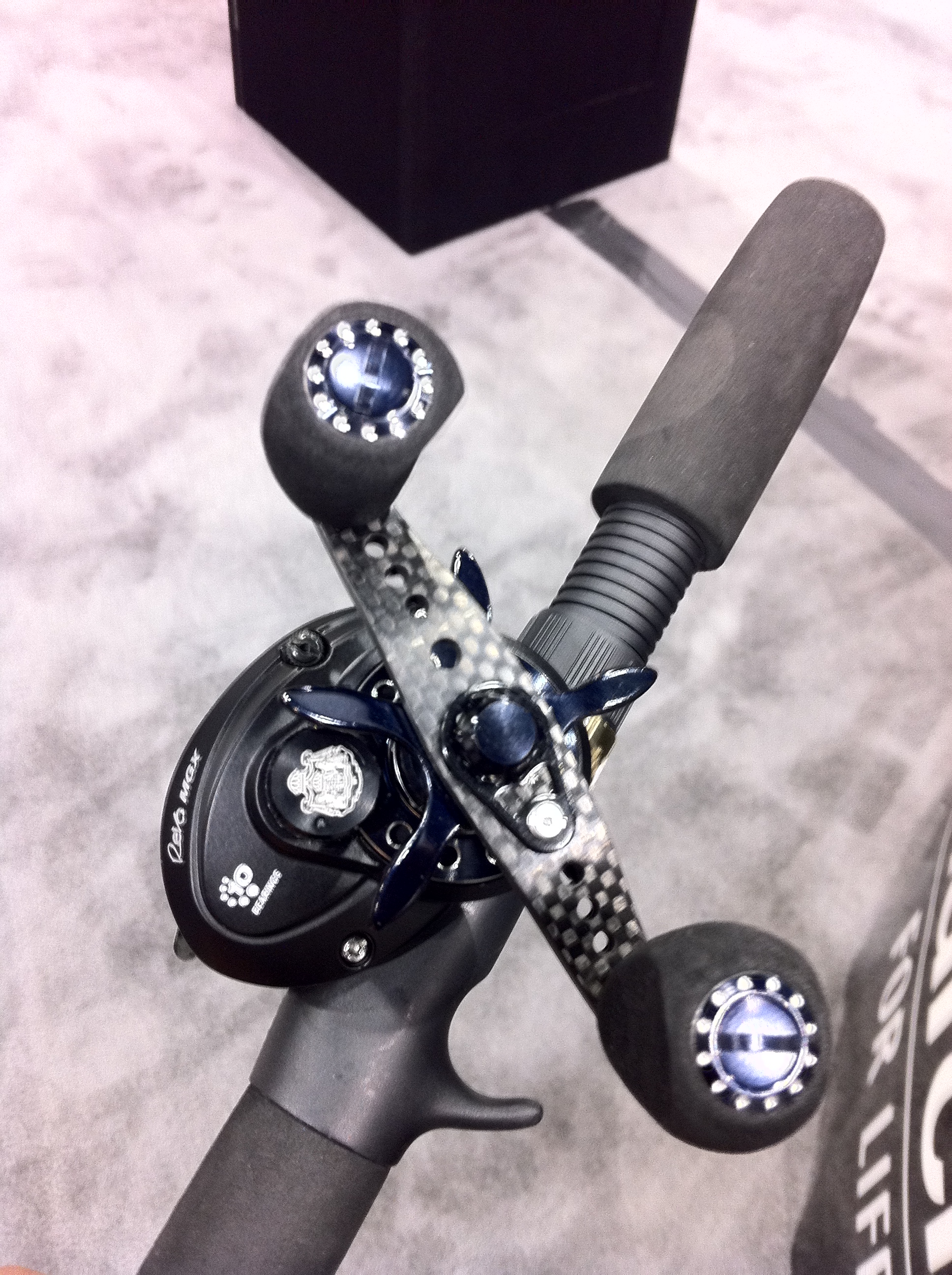
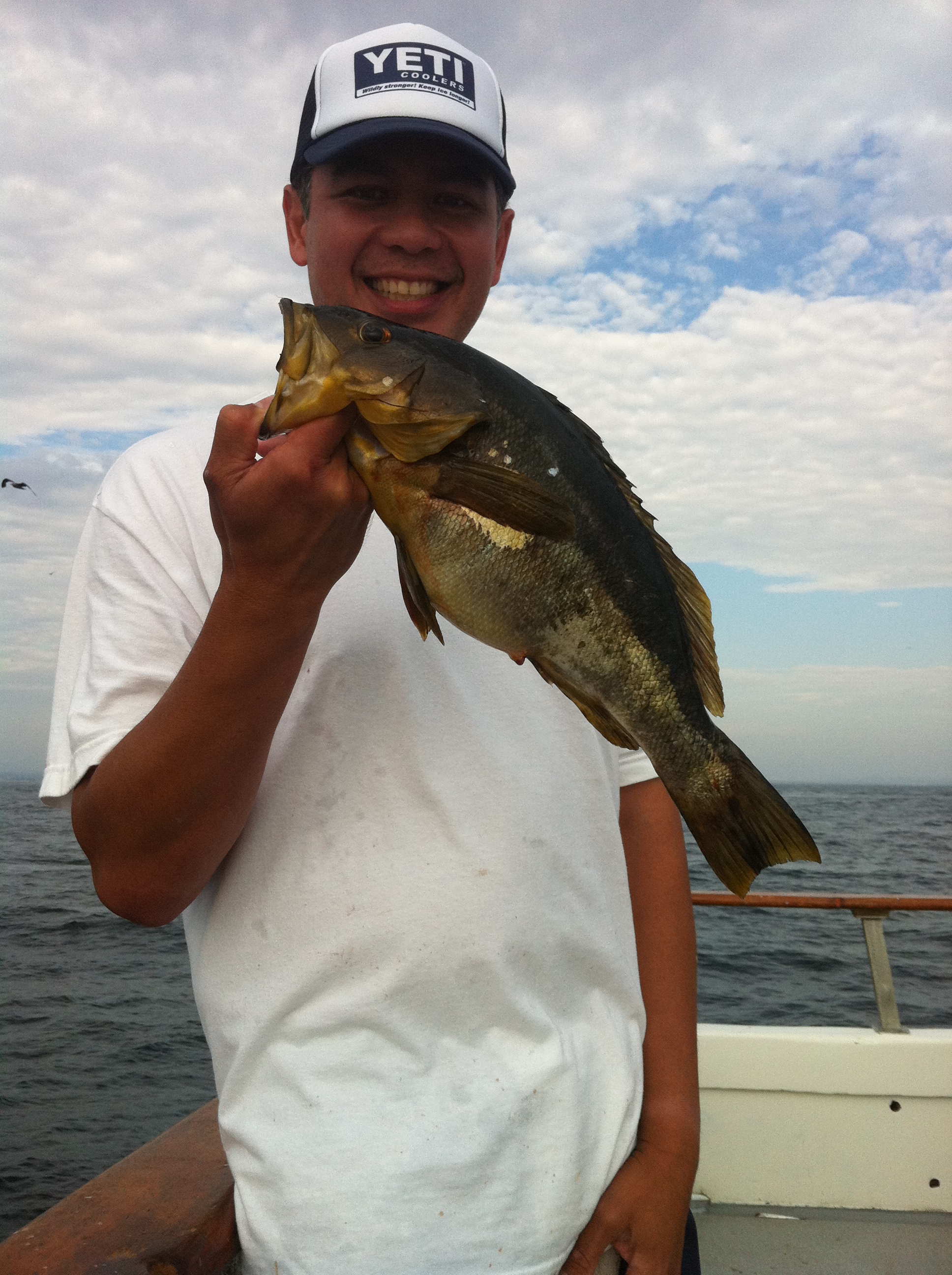
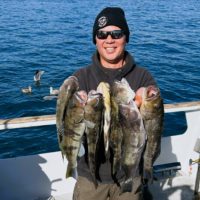
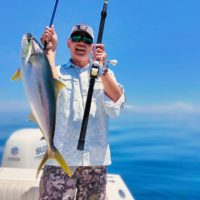
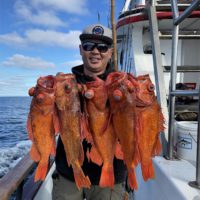






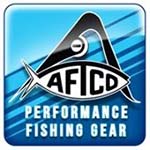
at 9:37 am
Nice article Joe! The most frustrating thing I find in flylining sardines for calicos is when you swing too early and they let go and get you stuck in the kelp. I’ve also noticed that a lot of these calicos are “Tarzan Fish” – when you wind them in, they may dash to another stringer of kelp. Be patient and work them out nice and easy. Sometimes you may have to freespool to get them out, and they usually do. The stern is, for the most part, the best place to flyline a live bait into the weeds, but some captains I’ve been with put the whole boat in the kelp, so if the conditions are OK, you can flyline up the side and on the bow. Calico bass fishing can be frustrating, but hang in there, and it will pay off!
at 10:11 am
That’s a good point Jimmy about putting it back in freespool sometimes to get them out. That’s a good tactic if you are really stuck. I had to go that way a couple times on Sunday.
I’ve been on rides where at least one side would have kelp access. That’s one of those things where it helps to know the crew or know what q’s to ask so you can figure out a good gameplan when you get out there. Thanks for stopping by!